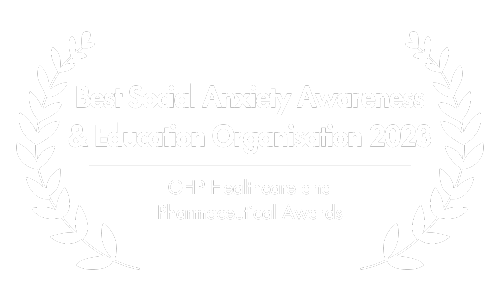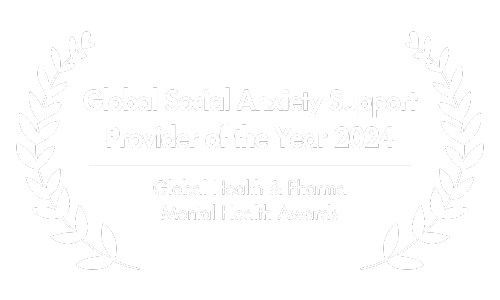The Neuroscience of Social Anxiety: The Power of Your Dopamine Balance
Social anxiety, often also referred to as social phobia, can be hard to live with.
If you are affected, you are probably all too familiar with the excessive fear of disapproval and negative judgment that go along with it.
Recent research suggests that an imbalance in key neurotransmitters, including dopamine, might be one of the potential underlying causes of the condition (e.g., Richard, 2005; Hood et al., 2010).
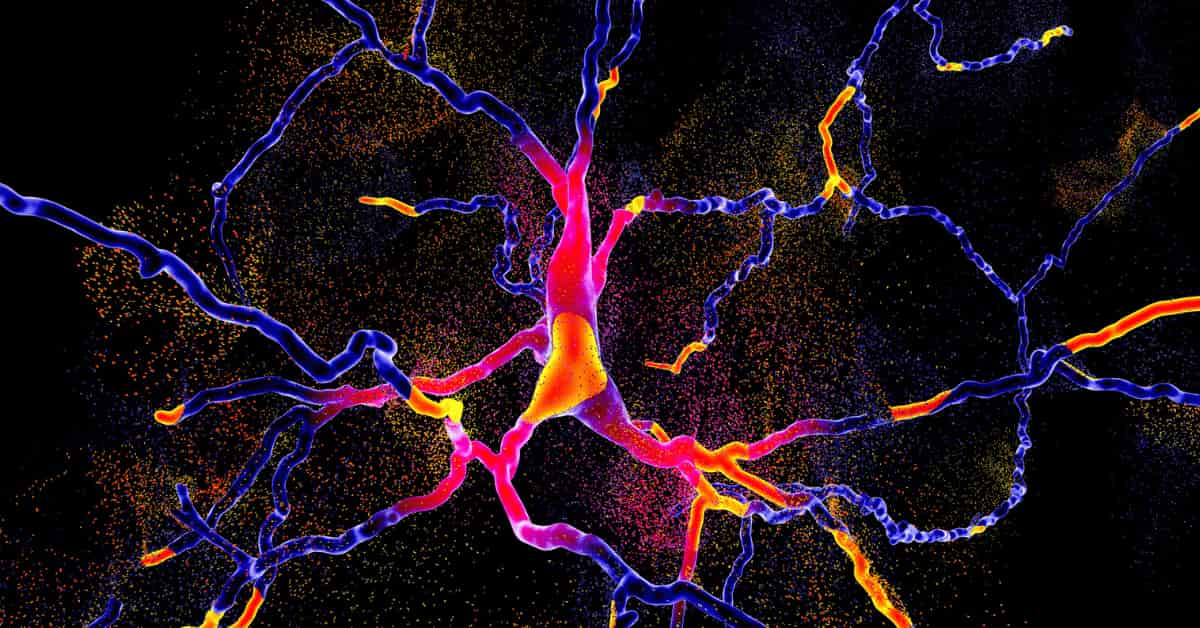
In this article, we will explore the link between an imbalance in dopamine levels and social anxiety, and discuss the value of addressing this imbalance to reduce anxiety symptoms in social situations.
We will look at practical lifestyle changes such as diet, exercise, and mindfulness, and explore the role of medications and therapies in regulating dopamine levels and managing social phobia.
Let’s dive in.
Dopamine: The Master Regulator in the Brain
Dopamine is an important neurotransmitter that plays a crucial role in regulating various functions in the brain, such as sleep, mood, appetite, motivation, perception, attention, movement, and coordination.
It is released in response to pleasant stimuli and reinforces behaviors that lead to reward, promoting learning and survival.
It is also known as the “feel-good chemical” and is responsible for transmitting signals of happiness and pleasure.

In short: Dopamine is involved in almost every higher executive function in the brain.
Apart from its beneficial effects, unbalanced dopamine levels are associated with various neurological and psychiatric disorders, including Parkinson’s disease, schizophrenia, and addictive behaviors (e.g., Howes & Kapur, 2009).
Brief: Dopamine regulates numerous important brain functions, but unbalanced levels can lead to neurological and psychiatric disorders.
The Link Between Dopamine Imbalance and Social Anxiety
There is growing evidence that imbalanced dopamine levels play an important role in the development and severity of social anxiety (e.g., Cervenka et al., 2012).
Studies have found that people with social anxiety disorder have decreased dopamine activity in certain brain regions, leading to increased anxiety, decreased motivation, and a weaker response to rewarding stimuli (e.g., Tiihonen et al., 1997; Schneier et al., 2000).
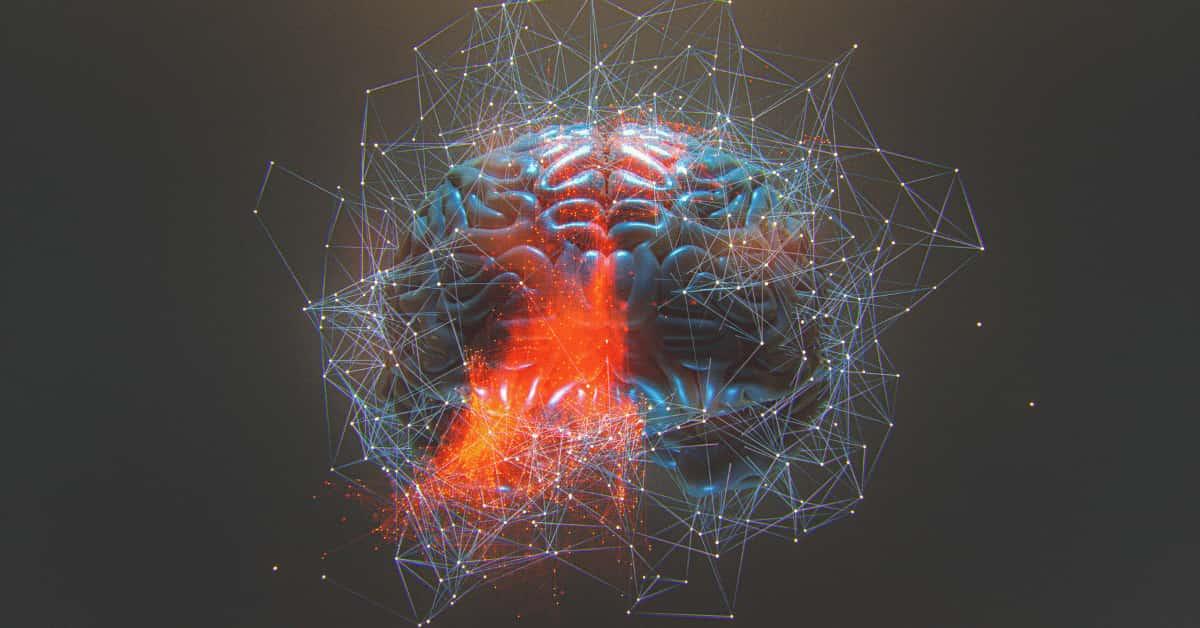
This altered dopamine activity is thought to contribute to the persistent negative thoughts and avoidance behaviors common in social anxiety (e.g., Gellner et al., 2021).
The brain’s reward system is critical for regulating mood and motivation. When dopamine levels are too low, the pleasure and satisfaction derived from social interactions can be diminished, leading to social avoidance behaviors and exacerbating symptoms of social anxiety.
Brief: Low dopamine levels may contribute to social anxiety by leading to negative thoughts, avoidance behaviors, and reduced pleasure from social interactions.
Effects of Dopamine Imbalance in People with Social Anxiety
We just mentioned the most important negative consequences of low dopamine levels in people with social anxiety. Here they are again:
- Maintenance of negative thoughts and feelings: Low dopamine levels are thought to be related to persistent negative thoughts and feelings such as anxiety, worry, and self-doubt that are characteristic of social anxiety disorder.
- Avoidant behaviors: Decreased dopamine levels may also contribute to avoidance behaviors, such as avoiding social situations, which can maintain and worsen social anxiety disorder.
- Decreased motivation: unbalanced dopamine levels can lead to decreased motivation and interest in pleasurable activities, which worsens the symptoms of social anxiety disorder.

Additionally, a dopamine imbalance can have other important negative effects, such as:
- Cognitive impairment (e.g., Zurkovsky et al., 2013): Unbalanced dopamine levels can impair attention, memory, and other cognitive functions, making it difficult to concentrate and solve problems.
- Physical symptoms (Cleveland Clinic, 2022): Physical symptoms such as sweating, trembling and heart palpitations, which are common in social anxiety disorder, may be related to altered dopamine release in the brain.
- Sleep disturbances (e.g., Finan & Smith, 2012): A dopamine imbalance can disrupt normal sleep patterns and lead to insomnia or other sleep disorders that can worsen the symptoms of social anxiety disorder.
- Comorbid mental illnesses (e.g., Belujon & Grace, 2017): Social anxiety disorder often co-occurs with mental illnesses such as depression, panic disorder, and obsessive-compulsive disorder, and a dopamine imbalance may play a role in their development and maintenance.

- Increased risk for substance abuse (e.g., Leyton & Vezina, 2014): low dopamine levels may increase the likelihood of substance abuse, as people with social anxiety disorder may turn to drugs or alcohol to relieve their anxiety symptoms.
- Lower resilience (Isingrini et al., 2016): Unbalanced dopamine levels can impair the brain’s ability to cope with stress and recover from adversity, decreasing resilience and increasing the risk for developing anxiety and other mental health conditions.
Please note that the effects of dopamine imbalance on the development and maintenance of social anxiety may vary from person to person, and the exact mechanisms are still being investigated by researchers.
Brief: Additionally, low dopamine levels can lead to cognitive impairment, physical symptoms, sleep disturbances, co-occurrence of mental illness, increased risk for substance abuse, and lower resilience.
Causes of Dopamine Imbalance in Social Anxiety Disorder
The causes of dopamine imbalance in social anxiety are believed to be the result of a complex interplay of factors, including genetics, environment, and neurobiology.
Research shows that people with social anxiety disorder often have an imbalance between excitatory and inhibitory neurotransmitters (Elsaid et al., 2022), which can lead to decreased dopamine levels.
In addition, stress has been found to impair dopamine signaling (Baik, 2020), which may also contribute to low dopamine levels in social anxiety disorder.

Several additional factors have been identified as possible causes of dopamine level imbalance in people with social anxiety disorder, including:
- Genetics (e.g., Marco-Pallarés et al., 2009): Some studies suggest that dopamine imbalance may be inherited and that certain genetic variations may affect dopamine signaling.
- Environmental factors (e.g., Chen et al., 2011): environmental stressors and the use of medications or toxins that interfere with dopamine signaling may contribute to dopamine imbalance.
- Neurodevelopmental factors (e.g., Money & Stanwood, 2013): Abnormalities in neurodevelopment, as seen in developmental disorders such as ADHD, can cause a dopamine imbalance.
- Neurodegenerative diseases (e.g., Rangel-Barajas, Coronel, & Florán, 2015): Some neurodegenerative diseases, such as Parkinson’s disease, are associated with imbalanced dopamine levels in certain brain regions.
- Substance Abuse (Wise & Robble, 2020): Substance abuse and addiction can alter dopamine signaling and lead to dopamine imbalance.

- Hormonal imbalances (e.g., Sinclair, Purves-Tyson, Allen, & Weickert, 2014): Hormonal imbalances, such as those associated with adrenal fatigue or hypothyroidism, can affect dopamine signaling.
- Inflammation (de Bartolomeis et al., 2022): Chronic inflammation in the brain is associated with altered dopamine signaling and dopamine imbalances.
- Sleep disorders (Volkow et al., 2012): Sleep disorders such as insomnia or sleep apnea are associated with dopamine imbalance and altered dopamine signaling.
- Nutrition (e.g., Hinz, Stein, & Uncini, 2012): deficiencies in certain nutrients such as vitamin B6 or iron can affect dopamine production and lead to dopamine imbalance.
- Chronic stress (Bloomfield, McCutcheon, Kempton, Freeman, & Howes, 2019): Chronic stress is associated with decreased dopamine levels and altered dopamine signaling, which can lead to a range of neurological and psychiatric symptoms.
Please note that the above factors are still being researched and that the exact causes of dopamine imbalance are not yet fully understood.
Next, let’s look at how your diet can affect your dopamine levels.
Brief: Dopamine imbalance in social anxiety is caused by a complex interplay of genetic, environmental, and neurobiological factors.

The Influence of Diet and Nutrition on Dopamine Levels
Diet and nutrition play a critical role in regulating dopamine levels in the brain, which requires a variety of nutrients, vitamins and minerals to produce and regulate dopamine.

A diet deficient in these nutrients can lead to imbalanced dopamine levels and altered dopamine signaling.
Key nutrients for dopamine production include the amino acid tyrosine, found in protein-rich foods such as meat, dairy products and soy, and vitamin B6, found in poultry, fish and whole grain products.
Tyrosine is the building block of dopamine, and a deficiency of tyrosine can reduce dopamine production.
Vitamin B6 is necessary for the conversion of tyrosine to dopamine, and a deficiency of this vitamin can also decrease dopamine production.

A diet high in fat and sugar, which is associated with an increased risk of obesity and metabolic disorders, can lead to imbalanced dopamine levels and altered dopamine signaling.
Some food additives, such as artificial sweeteners, are also associated with altered dopamine levels and may interfere with the brain’s ability to regulate dopamine.
Chronic inflammation, which has been linked to various diseases such as heart disease, type 2 diabetes, and some cancers, can also affect dopamine levels and signaling.

Eating anti-inflammatory foods such as fruits, vegetables and whole grains can help reduce inflammation and promote healthy dopamine levels.
Please keep in mind that your individual nutritional needs may differ from these recommendations. Therefore, be sure to contact your doctor before changing your diet.
While some foods support dopamine production and signaling in the brain, there are other foods that contain dopamine that has already been synthesized.
It is not clear whether this dopamine is readily absorbed and used by the human body. However, it is hypothesized that dopamine-containing foods improve dopamine levels and signaling in the brain.
To make it easier for you, we have created the following graphic which summarizes specific foods that contain dopamine. It is based on a scientific paper of Briguglio and colleagues published in 2018.

Please keep in mind that while certain foods may temporarily increase dopamine levels, it is not necessary to consume them to produce dopamine.
Likewise, it is important to remember that while certain foods may have an effect on dopamine levels, they should not be used as the sole means of regulating dopamine levels or improving mood.
Next, let’s take a look at the benefits of exercise on dopamine levels.
Brief: Diet affects dopamine levels and healthy signaling in the brain. A balanced diet with protein, B6, anti-inflammatory foods, and minimally processed foods supports healthy dopamine levels.
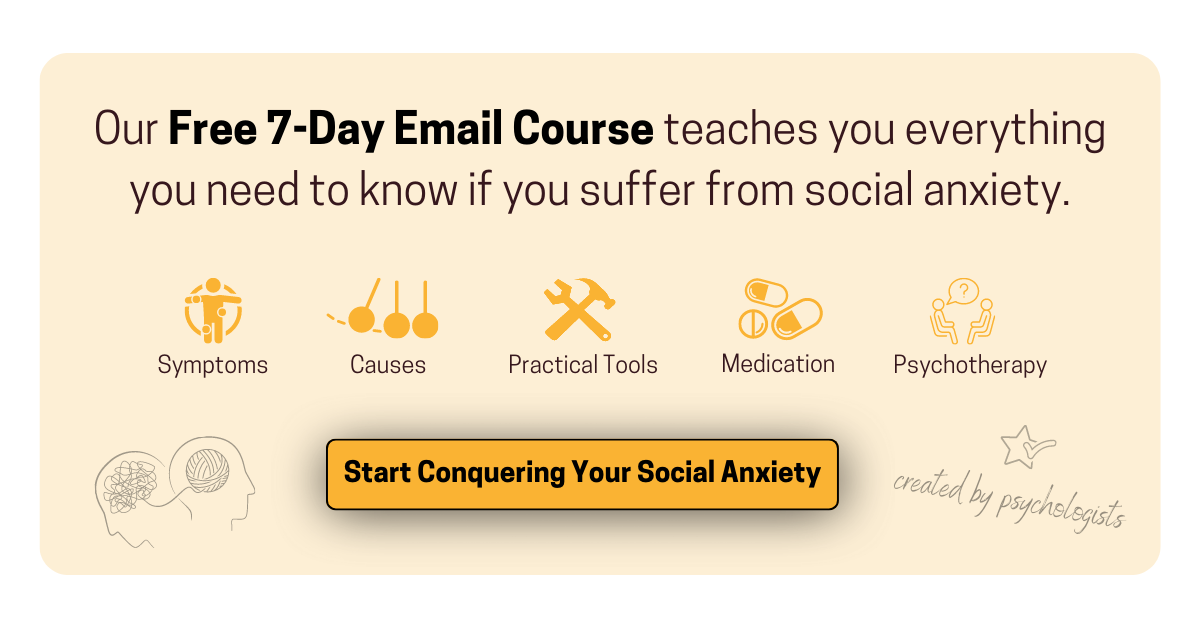
Benefits of Physical Activity and Exercise for the Dopamine Balance
Physical activity and exercise have numerous benefits for dopamine balance and overall brain health.
Regular exercise is associated with increased dopamine release, better mood and motivation, improved brain function and lower stress levels (Marques et al., 2021).
Exercise also boosts blood flow to the brain, providing it with more oxygen and nutrients that support healthy brain function and dopamine production.
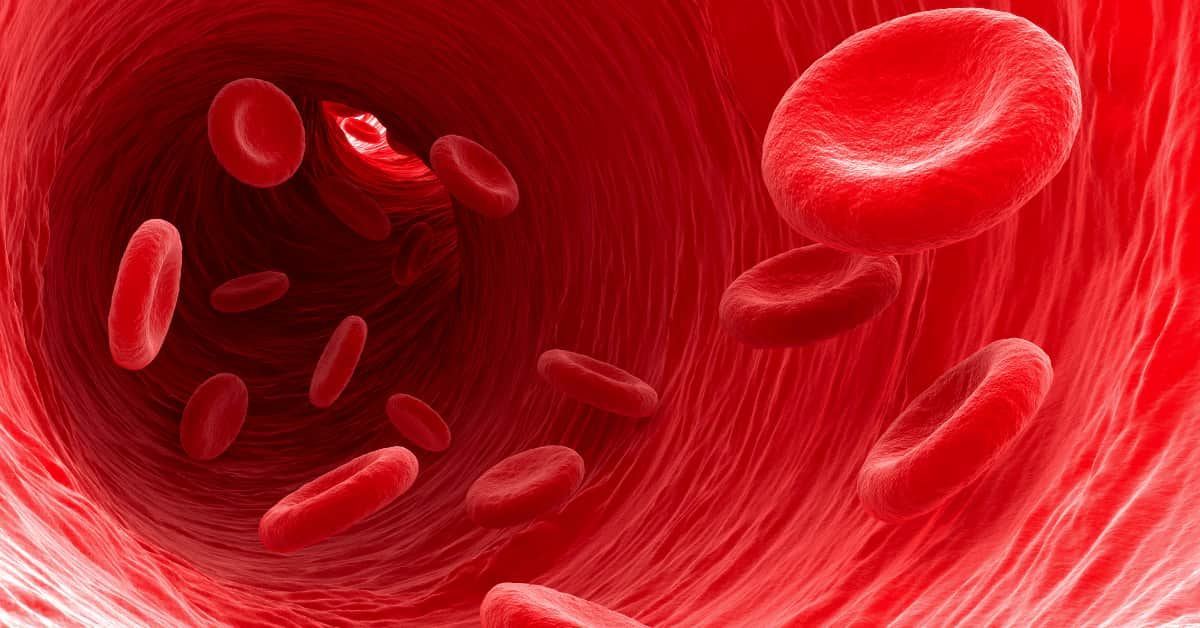
In addition, exercise has been shown to increase the production of BDNF, a protein that promotes the growth and survival of dopamine-producing neurons in the brain, and reduces inflammation in the brain that can interfere with dopamine signaling (Sleiman et al., 2016).
Regular exercise can also improve sleep (Dolezal, Neufeld, Boland, Martin, & Cooper, 2017), which is critical for regulating dopamine release and maintaining healthy dopamine levels.
To promote healthy dopamine levels and overall brain health, it is recommended to exercise and play sports regularly as part of a balanced lifestyle.

Here are some guidelines for improving dopamine levels through exercise and physical activity:
- Get at least 30 minutes of moderate-intensity exercise several times a week, such as brisk walking, cycling, or swimming.
- Add resistance training, such as weight lifting or bodyweight exercises, two to three times a week.
- Vary your exercise program so it doesn’t get boring and keeps your brain and body active.
- Exercise with others to motivate you and support you socially.
- Make exercise a regular habit by exercising at the same time every day.
- Make sure you get enough sleep (at least 7-8 hours a night) and hydration (8 glasses of water a day).
- Consult a physician to find the best exercise and activity program for your age, gender, and health status.

Overall, physical activity and exercise offer numerous benefits for dopamine balance and overall brain health.
It is crucial to consult your doctor before starting a new exercise regimen.
With diet and exercise, you already have two practical tools in hand that will positively impact your dopamine levels. Let’s take a look at yet another.
Brief: Regular physical activity improves brain function and has positive effects on the dopamine balance. A mixture of moderately intense endurance and strength training several times a week is recommended.
The Role of Mindfulness and Meditation in Balancing Dopamine Levels
Mindfulness and meditation are effective methods for maintaining dopamine levels and overall brain health.
These techniques involve focusing on the present moment and reducing distractions and stress, which leads to increased dopamine release and improved dopamine signaling in the brain (Kjaer et al., 2002).
Stress reduction is an important benefit of mindfulness and meditation. As mentioned previously, chronic stress is associated with decreased dopamine release and altered dopamine signaling in the brain, so stress reduction through mindfulness and meditation can improve dopamine levels.

In addition, mindfulness and meditation improve attention and concentration, which increases dopamine release and promotes healthy dopamine levels (e.g., Nieoullon, 2002).
These practices also help regulate emotions, which contributes to higher dopamine levels.
In addition, regular mindfulness and meditation practices have been shown to improve overall well-being by reducing symptoms of anxiety and depression, improving sleep quality, and promoting overall health (e.g., Lavin et al., 2021). All of these factors contribute to healthy dopamine levels.
By starting with simple techniques like deep breathing or a focused body scan, and gradually increasing the duration and complexity of your mindfulness and meditation practice, you can incorporate these techniques into your daily life.

Mindfulness and meditation can be practiced in a variety of settings, such as at home, in the park, or in a quiet environment.
For a complete introduction to mindfulness meditation and why it’s helpful if you suffer from social anxiety, you can click here to go to our introductory guide. It includes some guided meditations to help you get started.
Before we provide you with a full list of practical steps to improve your dopamine levels, let’s first take a brief look at medication and therapeutic treatments for dopamine imbalances.
Brief: Mindfulness and meditation can improve dopamine levels by reducing stress and distractions, increasing attention and regulating emotions, and by promoting overall well-being.

Medication as a Method of Balancing Dopamine Levels
Medication can be a useful tool for regulating dopamine levels when the brain’s dopamine function is disrupted.
However, it is important to know that medications should only be taken under the guidance of a healthcare professional and should never replace other forms of treatment such as psychotherapy, lifestyle changes, or mindfulness and meditation.

Dopamine agonists are a type of medication used to regulate dopamine levels.
These medications increase dopamine release in the brain and improve dopamine signaling. They are often used to treat conditions such as Parkinson’s disease, which is caused by low levels of dopamine in the brain.
Another drug used to regulate dopamine levels is selective serotonin reuptake inhibitors (SSRIs), which are often prescribed for depression and anxiety.
SSRIs increase serotonin levels, another neurotransmitter in the brain that can affect dopamine release and signaling.
If you would like to learn more about this type of medication, you can click here to read our article on serotonin imbalance and social anxiety, which discusses SSRIs in more detail.

Some medications used for other conditions, such as anti-anxiety medications, can also affect dopamine levels in the brain, although this may vary depending on the medication, dose, and person.
Medications can have side effects and may interact with other medications and diseases. You should ask a doctor about the possible benefits and risks of taking medications to regulate dopamine levels.
Next, let’s explore how therapy can positively impact your dopamine levels.
Brief: Medication, such as dopamine agonists and SSRIs, can regulate dopamine levels. They should only be taken under the guidance of a healthcare professional and should not replace other forms of treatment like psychotherapy, lifestyle changes or mindfulness and meditation.
How Therapy Can Regulate Dopamine Levels and Reduce Social Anxiety
Psychotherapies do not directly affect dopamine levels, but they can still have an indirect impact on dopamine functioning.
Psychotherapy can help an individual to manage their anxiety symptoms and reduce stress, which can have a positive impact on overall neurotransmitter functioning.

Additionally, by addressing the underlying causes of anxiety and depression, psychotherapy can help to regulate the balance of neurotransmitters, including dopamine, in the brain.
Therefore, therapy plays a critical role in treating social anxiety and regulating dopamine levels in the brain.
Psychotherapy, particularly cognitive behavioral therapy (CBT), has been shown to be effective in treating social anxiety (e.g., Behera, Samantaray, Kar, Nayak, & Chaudhury, 2020).
Cognitive behavioral therapy focuses on the connection between thoughts, feelings, and behaviors and helps individuals identify and overcome negative thinking patterns that contribute to their anxiety.
An important aspect of cognitive behavioral therapy is exposure therapy, in which individuals gradually face feared social situations in a controlled environment to build self-confidence and overcome anxiety.

Studies have shown that exposure therapy can alter brain activity and neurotransmitter levels and increase dopamine release in the brain (Hart, Rutledge, Glimcher, & Phillips, 2014), which can regulate mood and reduce symptoms of social anxiety.
Keep in mind that there are other forms of psychotherapy that have been shown to be effective in treating social anxiety.
If you are interested in a full overview of treatment options, we recommend you read our eBook Effective Psychotherapies for Social Anxiety Disorder – you can find it by clicking here.
Now that you are familiar with the numerous ways to positively influence your dopamine levels, let’s have a look at a list that compiles practical tools that you can use to start improving your dopamine balance right away.
Brief: Psychotherapy can help regulate dopamine levels and reduce social anxiety by managing symptoms, reducing stress, and addressing underlying causes of anxiety and depression.

Lifestyle Choices to Balance Dopamine Levels and Reduce Social Anxiety
Changes in your lifestyle can play an important role in balancing dopamine levels and reducing social anxiety.
To give you some practical tools, here are some steps you can incorporate into your daily life to improve dopamine balance and alleviate symptoms of social anxiety:
- Exercise: Regular exercise has been shown to increase dopamine release in the brain, regulating mood and emotions. Get at least 30 minutes of moderate-intensity exercise most days of the week, such as brisk walking, biking, or swimming.
- Sleep: Adequate sleep is critical for maintaining dopamine release and reducing anxiety and depression. Aim for 7-9 hours of sleep per night and develop a steady sleep schedule to regulate your body’s internal clock.
- Diet: A diet high in sugar, processed foods, and unhealthy fats can interfere with dopamine signaling and lead to anxiety and depression. Make sure to eat a balanced diet rich in whole foods, fruits, vegetables, lean protein and healthy fats.

- Reduce consumption of stimulants and alcohol: Caffeine and alcohol can interfere with dopamine signaling and increase anxiety and stress (e.g., Ferré O’Brien, 2011). Try to limit or avoid caffeine and alcohol consumption.
- Abstain from addictive substances and behaviors: Addiction has been shown to negatively affect dopamine levels (e.g., Samaha, Khoo, Ferrario, & Robinson, 2022). Refraining from taking addictive substances or engaging in addictive behavior safeguards your dopamine balance.
- Mindfulness practices: Mindfulness techniques such as meditation and yoga have been shown to regulate emotions, reduce stress and anxiety, and improve dopamine balance. Incorporate mindfulness practices like daily meditation or yoga into your daily routine.
- Social Interactions: Socializing and participating in meaningful relationships can regulate dopamine levels, improve mood and well-being, and alleviate symptoms of anxiety and depression (e.g., Torquet et al., 2018). Participate in social activities that you enjoy, such as spending time with friends, volunteering, or pursuing a hobby.
- Therapy: psychotherapy, such as cognitive behavioral therapy (CBT), can be an effective treatment for social anxiety and improve dopamine balance. Take advantage of therapy to better manage symptoms and increase overall well-being.
- Natural light: Natural light, especially during the day, can regulate dopamine levels and improve mood and well-being (Cawley et al., 2013). Spend time outdoors or use a light box in rooms with little natural light.
- Gratitude: focusing on positive experiences and expressing gratitude has been shown to increase dopamine levels and improve mood (e.g., Ashby, Isen, & Turken, 1999). Keep a gratitude journal or take time each day to reflect on the things you are grateful for.
- Try new experiences: New and exciting activities can increase dopamine release in the brain and improve mood and well-being (Salimpoor, Benovoy, Larcher, Dagher & Zatorre, 2011). Try new hobbies or take a trip to a new place.

- Music: It’s been proven that music you like increases dopamine release in the brain, improves mood, and reduces stress and anxiety (e.g., Salimpoor, Benovoy, Larcher, Dagher & Zatorre, 2011). Build music into your daily routine by listening to it or playing an instrument.
- Stress management: Chronic stress can impair dopamine release and contribute to anxiety and depression. Practice stress-reduction techniques, such as deep breathing, progressive muscle relaxation, or yoga, to manage stress and improve dopamine balance.
- Dietary supplements (e.g., Jongkees, Hommel, Kühn, Colzato, 2015): certain dietary supplements such as omega-3 fatty acids, B-complex vitamins, and probiotics have been shown to improve dopamine balance and reduce symptoms of anxiety and depression. Talk to your healthcare provider before taking supplements to make sure they are safe and appropriate for you.
Lifestyle changes can be a difficult process, but with time and persistence, they can help balance dopamine levels and reduce social anxiety. Be patient with yourself and acknowledge your progress.
Also, talk to your doctor before making any major dietary or lifestyle changes to make sure they are safe and appropriate.
Concluding Remarks
Social anxiety is a complex disorder that affects daily life and may be related to unbalanced dopamine levels.
Balanced dopamine levels can help manage social anxiety through diet, physical activity, therapy, mindfulness, and lifestyle changes such as stress reduction and gratitude.
Medications may also be prescribed, but should be part of a comprehensive treatment plan.
Working with a health care provider is key to finding an individualized approach that relieves symptoms and increases well-being.
Please note that an imbalance in dopamine levels may not necessarily be the cause of social anxiety. Many researchers and clinicians believe it is merely an epiphenomenon.

The term “epiphenomenon” is used to describe a secondary phenomenon that is caused by a primary cause but plays no causal role in producing the effect.
Therefore, an imbalance in dopamine may be the result of environmental or genetic factors that contribute to the development of social anxiety.
However, it may also be a result of the underlying pathology of social anxiety itself.
To learn more about the neuroscience of social anxiety, we recommend you read our article about the serotonin-social anxiety link. You can access it by clicking here.

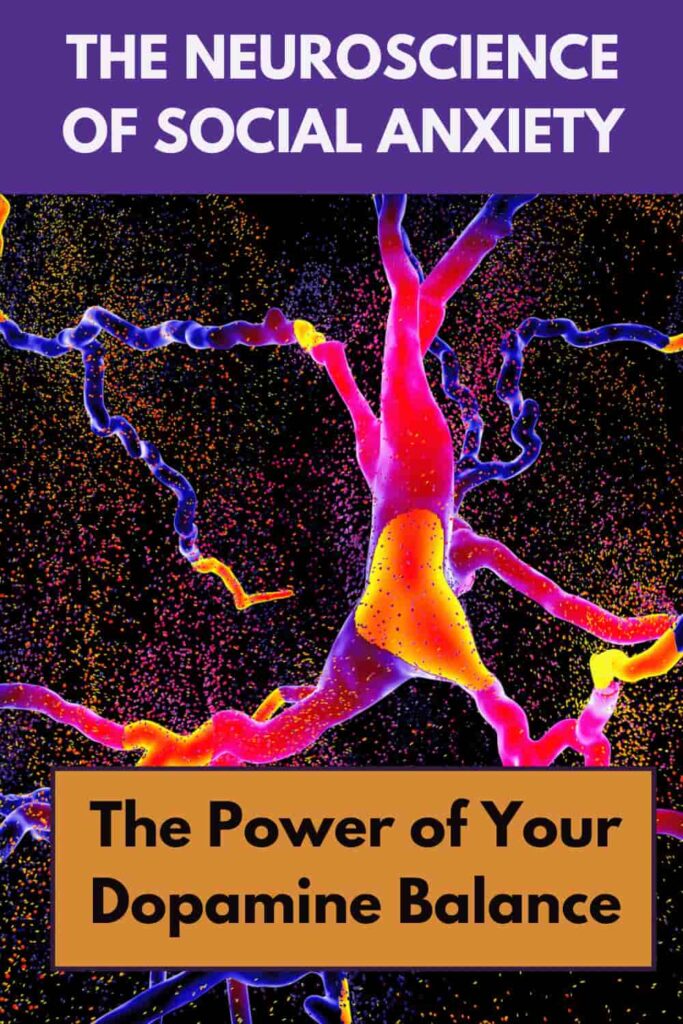
Pin | Share | Follow
[DISPLAY_ULTIMATE_SOCIAL_ICONS]
Ashby, F. G., Isen, A. M., & Turken, A. U. (1999). A neuropsychological theory of positive affect and its influence on cognition. Psychological review, 106(3), 529–550. https://doi.org/10.1037/0033-295x.106.3.529
Baik J. H. (2020). Stress and the dopaminergic reward system. Experimental & molecular medicine, 52(12), 1879–1890. https://doi.org/10.1038/s12276-020-00532-4
Behera, N., Samantaray, N. N., Kar, N., Nayak, M. R., & Chaudhury, S. (2020). Effectiveness of cognitive behavioral therapy on social anxiety disorder: A comparative study. Industrial psychiatry journal, 29(1), 76–81. https://doi.org/10.4103/ipj.ipj_2_20
Belujon, P., & Grace, A. A. (2017). Dopamine System Dysregulation in Major Depressive Disorders. The international journal of neuropsychopharmacology, 20(12), 1036–1046. https://doi.org/10.1093/ijnp/pyx056
Bloomfield, M. A., McCutcheon, R. A., Kempton, M., Freeman, T. P., & Howes, O. (2019). The effects of psychosocial stress on dopaminergic function and the acute stress response. eLife, 8, e46797. https://doi.org/10.7554/eLife.46797
Briguglio, M., Dell’Osso, B., Panzica, G., Malgaroli, A., Banfi, G., Zanaboni Dina, C., Galentino, R., & Porta, M. (2018). Dietary Neurotransmitters: A Narrative Review on Current Knowledge. Nutrients, 10(5), 591. https://doi.org/10.3390/nu10050591
Cawley, E. I., Park, S., aan het Rot, M., Sancton, K., Benkelfat, C., Young, S. N., Boivin, D. B., & Leyton, M. (2013). Dopamine and light: dissecting effects on mood and motivational states in women with subsyndromal seasonal affective disorder. Journal of psychiatry & neuroscience : JPN, 38(6), 388–397. https://doi.org/10.1503/jpn.120181
Cervenka, S., Hedman, E., Ikoma, Y., Djurfeldt, D. R., Rück, C., Halldin, C., & Lindefors, N. (2012). Changes in dopamine D2-receptor binding are associated to symptom reduction after psychotherapy in social anxiety disorder. Translational psychiatry, 2(5), e120. https://doi.org/10.1038/tp.2012.40
Chen, C., Chen, C., Moyzis, R., Stern, H., He, Q., Li, H., Li, J., Zhu, B., & Dong, Q. (2011). Contributions of dopamine-related genes and environmental factors to highly sensitive personality: a multi-step neuronal system-level approach. PloS one, 6(7), e21636. https://doi.org/10.1371/journal.pone.0021636
Cleveland Clinic. (2022, March 23). Dopamine deficiency: Symptoms, causes & treatment. Cleveland Clinic. Retrieved February 9, 2023, from https://my.clevelandclinic.org/health/articles/22588-dopamine-deficiency
de Bartolomeis, A., Barone, A., Vellucci, L., Mazza, B., Austin, M. C., Iasevoli, F., & Ciccarelli, M. (2022). Linking Inflammation, Aberrant Glutamate-Dopamine Interaction, and Post-synaptic Changes: Translational Relevance for Schizophrenia and Antipsychotic Treatment: a Systematic Review. Molecular neurobiology, 59(10), 6460–6501. https://doi.org/10.1007/s12035-022-02976-3
Dolezal, B. A., Neufeld, E. V., Boland, D. M., Martin, J. L., & Cooper, C. B. (2017). Interrelationship between Sleep and Exercise: A Systematic Review. Advances in preventive medicine, 2017, 1364387. https://doi.org/10.1155/2017/1364387
Elsaid, S., Rubin-Kahana, D. S., Kloiber, S., Kennedy, S. H., Chavez, S., & Le Foll, B. (2022). Neurochemical Alterations in Social Anxiety Disorder (SAD): A Systematic Review of Proton Magnetic Resonance Spectroscopic Studies. International journal of molecular sciences, 23(9), 4754. https://doi.org/10.3390/ijms23094754
Ferré, S., & O’Brien, M. C. (2011). Alcohol and Caffeine: The Perfect Storm. Journal of caffeine research, 1(3), 153–162. https://doi.org/10.1089/jcr.2011.0017
Finan, P. H., & Smith, M. T. (2013). The comorbidity of insomnia, chronic pain, and depression: dopamine as a putative mechanism. Sleep medicine reviews, 17(3), 173–183. https://doi.org/10.1016/j.smrv.2012.03.003
Gellner, A. K., Voelter, J., Schmidt, U., Beins, E. C., Stein, V., Philipsen, A., & Hurlemann, R. (2021). Molecular and neurocircuitry mechanisms of social avoidance. Cellular and molecular life sciences : CMLS, 78(4), 1163–1189. https://doi.org/10.1007/s00018-020-03649-x
Hart, A. S., Rutledge, R. B., Glimcher, P. W., & Phillips, P. E. (2014). Phasic dopamine release in the rat nucleus accumbens symmetrically encodes a reward prediction error term. The Journal of neuroscience : the official journal of the Society for Neuroscience, 34(3), 698–704. https://doi.org/10.1523/JNEUROSCI.2489-13.2014
Hinz, M., Stein, A., & Uncini, T. (2012). Relative nutritional deficiencies associated with centrally acting monoamines. International journal of general medicine, 5, 413–430. https://doi.org/10.2147/IJGM.S31179 (Retraction published Int J Gen Med. 2020 Dec 16;13:1549)
Hood, S. D., Potokar, J. P., Davies, S. J., Hince, D. A., Morris, K., Seddon, K. M., Nutt, D. J., & Argyropoulos, S. V. (2010). Dopaminergic challenges in social anxiety disorder: evidence for dopamine D3 desensitisation following successful treatment with serotonergic antidepressants. Journal of psychopharmacology (Oxford, England), 24(5), 709–716. https://doi.org/10.1177/0269881108098144
Howes, O. D., & Kapur, S. (2009). The dopamine hypothesis of schizophrenia: version III–the final common pathway. Schizophrenia bulletin, 35(3), 549–562. https://doi.org/10.1093/schbul/sbp006
Isingrini, E., Perret, L., Rainer, Q., Amilhon, B., Guma, E., Tanti, A., Martin, G., Robinson, J., Moquin, L., Marti, F., Mechawar, N., Williams, S., Gratton, A., & Giros, B. (2016). Resilience to chronic stress is mediated by noradrenergic regulation of dopamine neurons. Nature neuroscience, 19(4), 560–563. https://doi.org/10.1038/nn.4245
Jongkees, B. J., Hommel, B., Kühn, S., & Colzato, L. S. (2015). Effect of tyrosine supplementation on clinical and healthy populations under stress or cognitive demands–A review. Journal of psychiatric research, 70, 50–57. https://doi.org/10.1016/j.jpsychires.2015.08.014
Kjaer, T. W., Bertelsen, C., Piccini, P., Brooks, D., Alving, J., & Lou, H. C. (2002). Increased dopamine tone during meditation-induced change of consciousness. Brain research. Cognitive brain research, 13(2), 255–259. https://doi.org/10.1016/s0926-6410(01)00106-9
Lavin, P., Nazar, R., Nassim, M., Noble, H., Solomonova, E., Dikaios, E., Novak, M., Mucsi, I., Trinh, E., Potes, A., Alam, A., Suri, R. S., Thomas, Z., Mc Veigh, C., Lipman, M., Torres-Platas, S., Linnaranta, O., & Rej, S. (2021). Do Brief Mindfulness Interventions (BMI) and Health Enhancement Programs (HEP) Improve Sleep in Patients in Hemodialysis with Depression and Anxiety?. Healthcare (Basel, Switzerland), 9(11), 1410. https://doi.org/10.3390/healthcare9111410
Leyton, M., & Vezina, P. (2014). Dopamine ups and downs in vulnerability to addictions: a neurodevelopmental model. Trends in pharmacological sciences, 35(6), 268–276. https://doi.org/10.1016/j.tips.2014.04.002
Marco-Pallarés, J., Cucurell, D., Cunillera, T., Krämer, U. M., Càmara, E., Nager, W., Bauer, P., Schüle, R., Schöls, L., Münte, T. F., & Rodriguez-Fornells, A. (2009). Genetic variability in the dopamine system (dopamine receptor D4, catechol-O-methyltransferase) modulates neurophysiological responses to gains and losses. Biological psychiatry, 66(2), 154–161. https://doi.org/10.1016/j.biopsych.2009.01.006
Marques, A., Marconcin, P., Werneck, A. O., Ferrari, G., Gouveia, É. R., Kliegel, M., Peralta, M., & Ihle, A. (2021). Bidirectional Association between Physical Activity and Dopamine Across Adulthood-A Systematic Review. Brain sciences, 11(7), 829. https://doi.org/10.3390/brainsci11070829
Money, K. M., & Stanwood, G. D. (2013). Developmental origins of brain disorders: roles for dopamine. Frontiers in cellular neuroscience, 7, 260. https://doi.org/10.3389/fncel.2013.00260
Nieoullon A. (2002). Dopamine and the regulation of cognition and attention. Progress in neurobiology, 67(1), 53–83. https://doi.org/10.1016/s0301-0082(02)00011-4
Rangel-Barajas, C., Coronel, I., & Florán, B. (2015). Dopamine Receptors and Neurodegeneration. Aging and disease, 6(5), 349–368. https://doi.org/10.14336/AD.2015.0330
Richard I. H. (2005). Anxiety disorders in Parkinson’s disease. Advances in neurology, 96, 42–55.
Salimpoor, V. N., Benovoy, M., Larcher, K., Dagher, A., Zatorre, R. J., & Lewis, J. D. (2011). Anatomically distinct dopamine release during anticipation and experience of peak emotion to music. Nature Neuroscience, 14(2), 257-262. https://doi.org/10.1038/nn.2726
Samaha, A. N., Khoo, S. Y., Ferrario, C. R., & Robinson, T. E. (2021). Dopamine ‘ups and downs’ in addiction revisited. Trends in neurosciences, 44(7), 516–526. https://doi.org/10.1016/j.tins.2021.03.003
Schneier, F. R., Liebowitz, M. R., Abi-Dargham, A., Zea-Ponce, Y., Lin, S. H., & Laruelle, M. (2000). Low dopamine D(2) receptor binding potential in social phobia. The American journal of psychiatry, 157(3), 457–459. https://doi.org/10.1176/appi.ajp.157.3.457
Sinclair, D., Purves-Tyson, T. D., Allen, K. M., & Weickert, C. S. (2014). Impacts of stress and sex hormones on dopamine neurotransmission in the adolescent brain. Psychopharmacology, 231(8), 1581–1599. https://doi.org/10.1007/s00213-013-3415-z
Sleiman, S. F., Henry, J., Al-Haddad, R., El Hayek, L., Abou Haidar, E., Stringer, T., Ulja, D., Karuppagounder, S. S., Holson, E. B., Ratan, R. R., Ninan, I., & Chao, M. V. (2016). Exercise promotes the expression of brain derived neurotrophic factor (BDNF) through the action of the ketone body β-hydroxybutyrate. eLife, 5, e15092. https://doi.org/10.7554/eLife.15092
Tiihonen, J., Kuikka, J., Bergström, K., Lepola, U., Koponen, H., & Leinonen, E. (1997). Dopamine reuptake site densities in patients with social phobia. The American journal of psychiatry, 154(2), 239–242. https://doi.org/10.1176/ajp.154.2.239
Torquet, N., Marti, F., Campart, C., Tolu, S., Nguyen, C., Oberto, V., Benallaoua, M., Naudé, J., Didienne, S., Debray, N., Jezequel, S., Le Gouestre, L., Hannesse, B., Mariani, J., Mourot, A., & Faure, P. (2018). Social interactions impact on the dopaminergic system and drive individuality. Nature communications, 9(1), 3081. https://doi.org/10.1038/s41467-018-05526-5
Volkow, N. D., Tomasi, D., Wang, G. J., Telang, F., Fowler, J. S., Logan, J., Benveniste, H., Kim, R., Thanos, P. K., & Ferré, S. (2012). Evidence that sleep deprivation downregulates dopamine D2R in ventral striatum in the human brain. The Journal of neuroscience : the official journal of the Society for Neuroscience, 32(19), 6711–6717. https://doi.org/10.1523/JNEUROSCI.0045-12.2012
Wise, R. A., & Robble, M. A. (2020). Dopamine and Addiction. Annual review of psychology, 71, 79–106. https://doi.org/10.1146/annurev-psych-010418-103337
Zurkovsky, L., Bychkov, E., Tsakem, E. L., Siedlecki, C., Blakely, R. D., & Gurevich, E. V. (2013). Cognitive effects of dopamine depletion in the context of diminished acetylcholine signaling capacity in mice. Disease models & mechanisms, 6(1), 171–183. https://doi.org/10.1242/dmm.010363

About the Author: Martin Stork
Martin is a professional psychologist with a background in physical therapy. He has organized and led various support groups for people with social anxiety in Washington, DC and Buenos Aires, Argentina. He is the founder of Conquer Social Anxiety Ltd, where he operates as a writer, therapist and director. You can click here to find out more about Martin.







